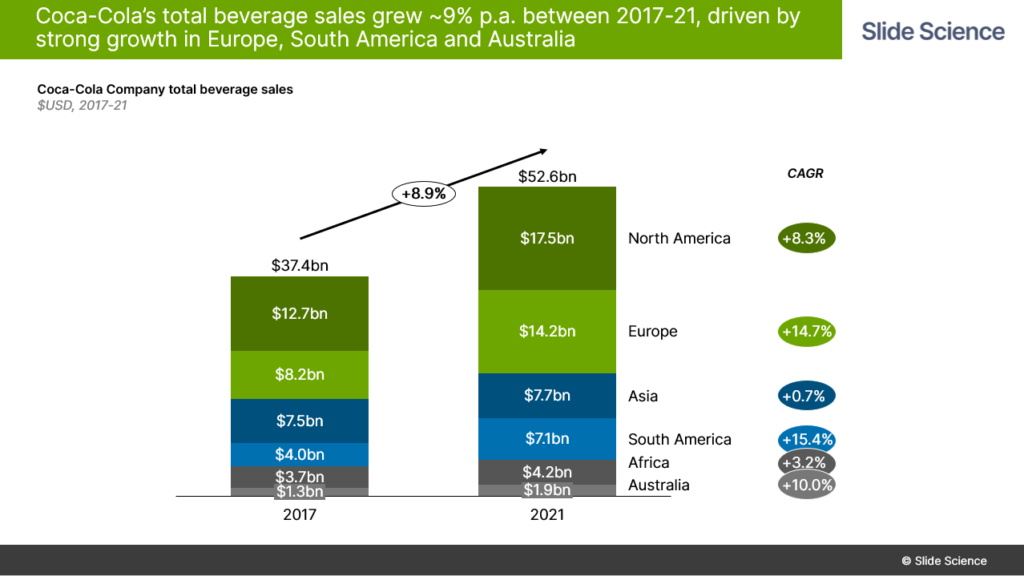It’s not uncommon to find yourself trying to make sense of a complex set of information.
And you’ve probably thought to yourself: how on Earth do I make sense of all this… and then how do I communicate it?
That’s where the MECE Principle comes in.
What is the MECE Principle?
The MECE Principle helps you translate a set of complex ideas or information into groups that are simple, logical, and easy to understand. Plus, it ensures that you don’t forget to include any groups.
There are two components to the MECE Principle:
- Mutually exclusive (ME): This means that each group is completely distinct and there’s no overlap between groups.
- Collectively exhaustive (CE): This means that the sum of all your groups covers all possible options.
Together, these components will help you translate complex information into simple and logical groups.

A simplified example of the MECE Principle: Rolling dice
It’s probably easiest to learn the MECE Principle by looking at examples, so let’s start with a simple example.
Imagine that you were summarising the results of rolling a standard six-sided dice. Let’s apply the MECE Principle to this situation:
- Mutually exclusive: There are six possible outcomes of rolling a dice, and they are 1, 2, 3, 4, 5, and 6. Each possible roll of the dice can only result in one outcome; you can’t roll a single dice and get an outcome of 2 and 5. Therefore, these outcomes are mutually exclusive.
- Collectively exhaustive: We just mentioned that there are six outcomes of rolling a standard dice. And there are clearly no additional possible outcomes that we’ve missed because the dice is six-sided. Therefore, these outcomes are collectively exhaustive.
Easy enough? Alright, let’s move onto a more complex example.
A real-world example of the MECE Principle: Revenue data
This time, let’s imagine that we are working with Coca-Cola Company. Our colleague is presenting sales data that is split by geography.
Our colleague hasn’t heard of the MECE Principle. He’s just thrown this slide together without thinking too much about it:

Let’s examine this through the lens of the MECE Principle:
- Mutually exclusive: There is an overlap between Eurasia and Asia, which means (1) we are presenting some of the same data twice, and (2) we have to do a calculation to figure out the values for Europe.
- Collectively exhaustive: We’re completely missing sales data for Australia, which means that we cannot sum values across all the groups to calculate total global sales.
If our colleague had grouped his data in a MECE way, then he would have better options for building clear and compelling slides. In fact, he could build a slide that shows both global growth and geographic growth, like this:

As a side note, if you’d like to learn how to always select the most appropriate chart for your data, feel free to join our free email course. You’ll learn that, plus a whole bunch of other things, such as how to write compelling executive summary slides and how to improve the use of text in slides.
How to ensure you’re being MECE
I’m sure you’re now thinking “sure, I know what MECE is now… but how do I ensure that my groupings are MECE? There are always unknown unknowns”.
Fair enough… and honestly, experience really does help you improve your ability to be MECE.
But here are a couple of simple shortcuts that I’ve picked up over the years:
Mathematical structures
Perhaps the most simple concepts to break down in a MECE way are mathematical concepts. If there’s a pre-defined formula for a concept, then you already know at least one way to break down that concept in a MECE way.
Example 1: Profit formula
Let’s take a common formula for profit:
Profit = Revenue – Costs
If you were to examine this with a MECE lens, what would you say? Firstly, it’s clear that revenue and costs are different things, so it’s safe to say that they are mutually exclusive.
Secondly, because there are no variables in this formula apart from revenue and costs, you can be confident that they are collectively exhaustive.
Example 2: Hiring costs formula
Let’s look at an example that’s less common. Let’s try to break down ‘hiring costs’ into components that are MECE.
Ask yourself, how would you calculate hiring costs? There are obviously a number of different methods, but one common method might be:
Hiring Costs = Number of Hires x Average Cost Per Hire
Again, because this is a formulaic representation of hiring costs, you can be confident that you’re being MECE.
Process structures
One secret trick I often use for MECE breakdowns is to use processes. If a concept is related to a process, then you can use each step of the process as a MECE grouping.
Example 3: Product Feedback Process
Let’s take another real-world example: better utilizing product feedback.
This breakdown works because there’s a defined process that we already use for product feedback. This is the process:
(1) Gather feedback, (2) analyse the feedback, (3) prioritise the feedback, and (4) action the feedback.
In some ways, this is similar to a mathematical structure. We can use each step in the process as a MECE grouping, and simply confirm that each step of the process is distinct (ME) and there are no missing steps (CE).
